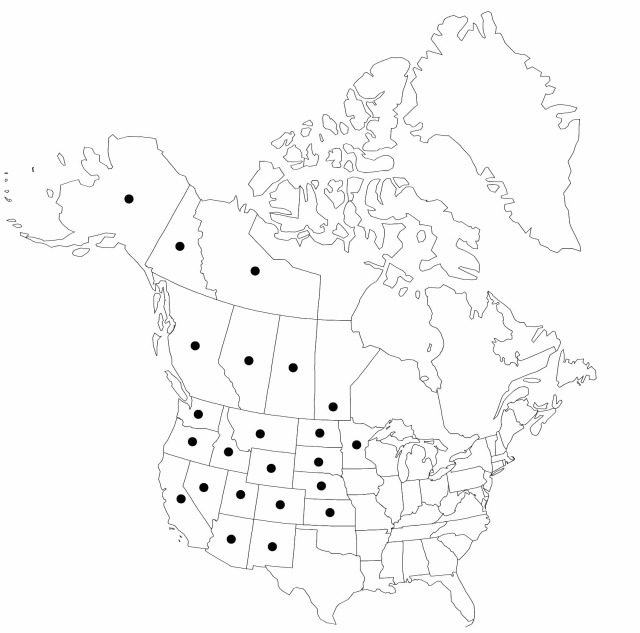Difference between revisions of "Carex filifolia"
Gen. N. Amer. Pl. 2: 204. 1818.
FNA>Volume Importer |
FNA>Volume Importer |
Revision as of 19:07, 24 September 2019
Culms round or trigonous, filiform, wiry, angles proximal to spike blunt or sharp, 5–35 cm, shorter than or longer than leaves. Leaves: basal leaf sheaths fibrillose when old; blades yellow-green or bright green, involute-cylindric, quill-shaped, 6–25 cm, 0.3–0.7 mm wide near base. Spike 7–30 × 3–7 mm, staminate portion 4–14 mm. Proximal pistillate scales pale red-brown with white or gold margins, broadly obovate, 2.3–4.5(–6.5) × 1.7–4 mm, shorter or longer than perigynia, apex obtuse to short-awned. Staminate scales red-brown with broad, white margins, broadly obovate, apex obtuse. Perigynia (2–)5–18, appressed to ascending, white to gold, obovate to orbiculate, 1.9–4.8 × 1.3–2 mm, body conspicuously hirsute or pubescent, at least distal 1/4 (occasionally only proximal to beak); beak 0–0.8 mm, style base often conspicuously exserted from beak; rachilla present. Achenes obovate to elliptic, 1.5–3.3 × 1.1–1.9 mm. Stigmas ± black.
Distribution

North America.
Discussion
Varieties 2 (2 in the flora).
Selected References
None.
Key
| 1 | Perigynia (2.8–)3–4.8 mm, beak 0.2–0.8 mm; achene 2.2–3.3 mm; longest pistillate scales (excluding awns) usually equaling or longer than perigynia. | Carex filifolia var. filifolia |
| 1 | Perigynia 1.9–3 mm, beak absent or less than 0.2(–0.3) mm; achene 1.5–2.3 mm; longest pistillate scales (excluding awns) often shorter than perigynia. | Carex filifolia var. erostrata |